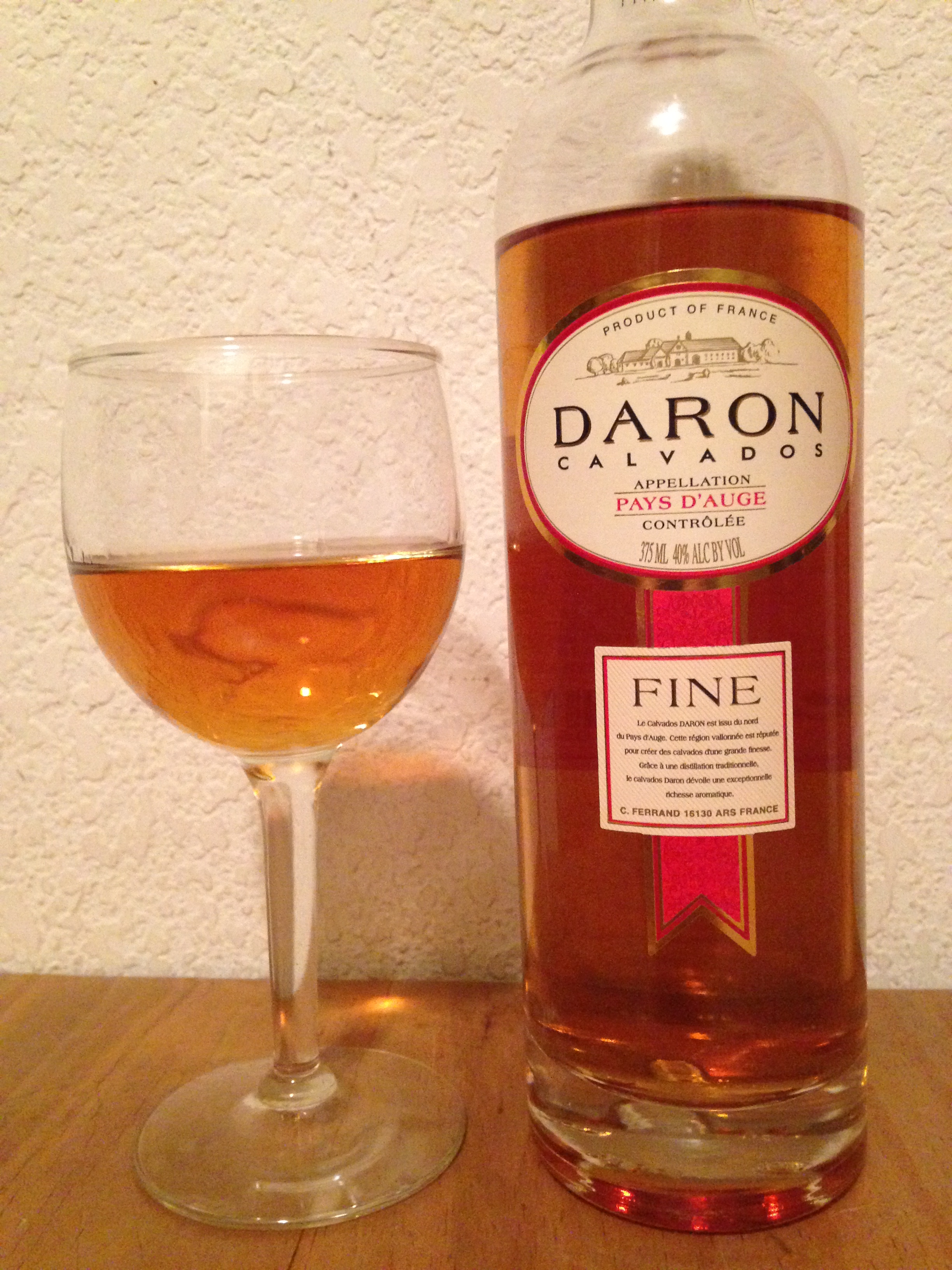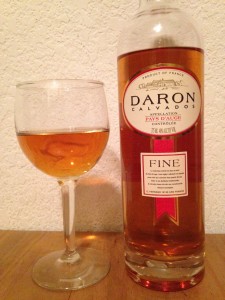Calvados Review: Daron Calvados

 Hello again, and apologies for the delay since last time. But, you see, I’ve been busy plotting. Plotting the planting of a small cider apple orchard, that is. More on that later. For now, though, let’s venture into an arena that I have little experience in (apologies in advance…)–Calvados.
Hello again, and apologies for the delay since last time. But, you see, I’ve been busy plotting. Plotting the planting of a small cider apple orchard, that is. More on that later. For now, though, let’s venture into an arena that I have little experience in (apologies in advance…)–Calvados.
(Optional soundtrack for this week’s review–“Albert Goes West” and “Midnight Man” by Nick Cave and the Bad Seeds. Check it out…’dirty old man rock’ at its finest.)
Calvados is apple brandy as distilled from a hard cider base in the département (what we in the U.S. would call a state) of Calvados in the Normandy region of France. I’ve never been much a spirits fan–due mostly to the high-octane burn of the alcohol content and some bad memories of my 15 year old self getting blasted on Tequila and having a visceral reaction to the smell of it ever since. But enough about me. Calvados the département, as laid out in detail by Charles Neal in his epic tome Calvados: The Spirit of Normandy, may or may not (though very probably not) have been named after a Spanish ship called either the El Salvador or San Salvador that landed in Normandy in 1588 with a hold containing Spanish apple brandy and whose name was later corrupted into Calvados, after which the region was eventually named.
Apocryphal though that story likely is–in all likelihood the region is really named after the bands of land lacking vegetation (calva dorsa, or bald backs) on the Northern coast which sailors used for navigation–the apple (and sometimes pear) spirit that carries the region’s name is no less legendary.
The Norman region is a great apple-growing region, and is home to both small-scale, family-run cideries and Calvados producers as well as much larger-scale operations. I came across Daron Calvados at the Boulder Wine Merchant, which is from the latter category–it’s a blend of various sources of Calvados from the Pays D’Auge region of Normandy (one of three major appellation regions for Calvados).
Neal describes the particular purveyor of Calvados that Daron represents as a Negoçiant–namely, an organization that buys Calvados from various sources (e.g., small farms), continues the aging process (maybe), and markets the finished product. It is an aggregation operation, and as such there is no way to trace the origin or identify the specific process around the product as many separately-produced Calvados sources went into the blend.
Be that as it may, this is better Calvados than the few I’ve had in the states so far. One look at it compared to the cheap variety I had at home for cooking–Calvados Coquerel–showed a clear difference–Daron was much darker, with caramel hues. The taste profile is a similar story–while in both cases the 40% alcohol content is intense and lingering, with Daron there is a fullness and body which is far more smooth and which significantly reduces the harshness inherent in the high alcohol content.
There’s apple flavor in Daron, but it’s a caramelized, burnt apple more so than the fresh, tart apple you can sometimes get in cider. The acidity so obvious in new ciders isn’t noticeable in the flavor at all–at least to me. However, at 4.0 pH, there’s clearly some acidity here on an objective basis that I’m not detecting under the alcohol beat-down.
The aroma side is more apparent, with rich caramel, leather, and woody/earthy notes in the Daron that I don’t get from Coquerel…most likely from the increased age and the mellowing in oak which the former has but I suspect the latter doesn’t.
While I struggle to drink it, I’ve taken advantage of Calvados in another way for some time–as a cooking additive to amp up the apple flavor in dishes like apple pie to a new level. Go this route and you don’t need to worry about the alcohol, as it evaporates during cooking, leaving just the concentrated flavor.
At $20, Daron is pretty reasonable, compared to an $80 single-farm Pays D’Auge producer at the same liquor store. However, a little of this goes a long way, so if your palate is sophisticated enough to tell the difference and to prefer the latter, by all means pursue it because this stuff will last you quite some time and may well bail you out on one of those colder, winter nights…
In unrelated news, I should have my cider fermentation tutorial up soon…it won’t be fully comprehensive, as the experiments I’m conducting therein are still not fully concluded, but it’s been too long, there’s a lot to talk about, and it’s time to get that content out there.
–
Thanks for visiting The Cidersage Blog. If you found this content to be useful, consider subscribing via the Subscribe link in the side bar, and be sure to visit our resources and tutorials pages for more in-depth hard cider and mead information.
Leave a comment